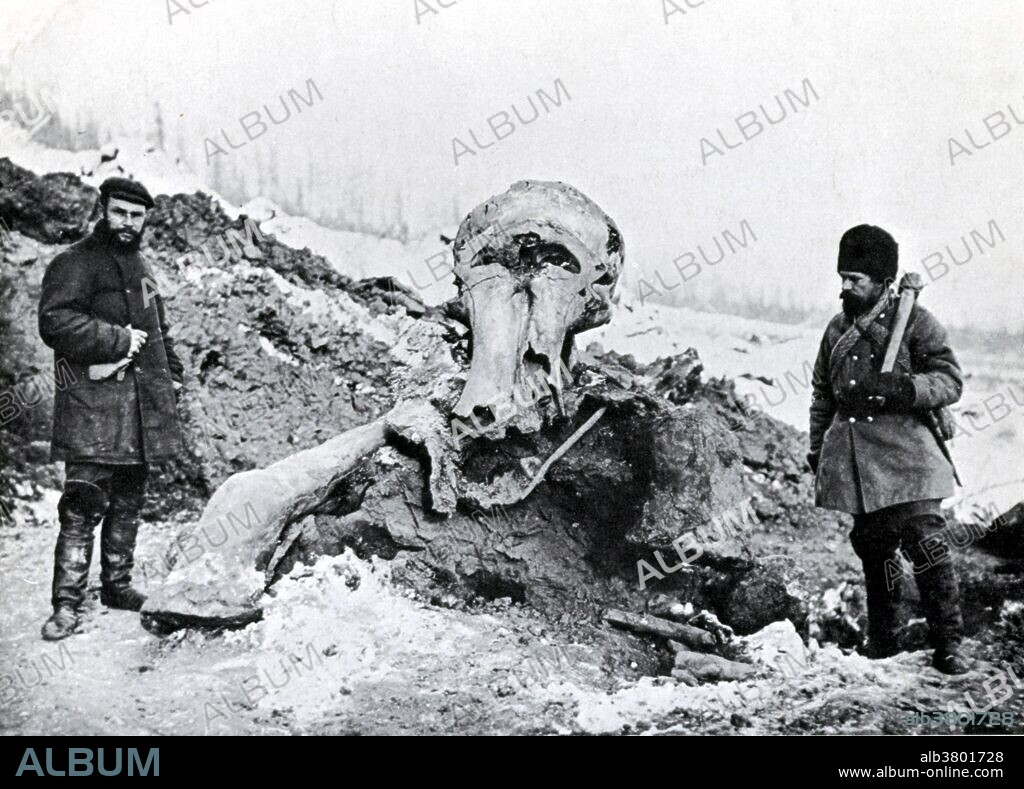alb3801728
Berezovka Woolly Mammoth, 1901

|
Zu einem anderen Lightbox hinzufügen |
|
Zu einem anderen Lightbox hinzufügen |



Haben Sie bereits ein Konto? Anmelden
Sie haben kein Konto? Registrieren
Dieses Bild kaufen

Titel:
Berezovka Woolly Mammoth, 1901
Untertitel:
Siehe automatische Übersetzung
When the Berezovka mammoth was discovered sticking out of a river bank in Siberia, the flesh of its skull was partially eaten away by wolves, but its body and hugs front legs were perfectly preserved. E. W. Pfizenmayer was one of the scientists who recovered and studied the mammoth wrote: "Its death must have occurred very quickly after its fall, for we found half-chewed food still in its mouth, between the back teeth and on its tongue, which was in good preservation. The food consisted of leaves and grasses, some of the latter carrying seeds. We could tell from these that the mammoth must have come to its miserable end in the autumn." The Woolly Mammoth (Mammuthus primigenius), also called the tundra mammoth, is a species of mammoth. Unlike most other prehistoric animals, their remains are often not literally fossilized, turned into stone, but rather are preserved in their organic state. This is due in part to the frozen climate of their habitats, and to their massive size.
Bildnachweis:
Album / Science Source / New York Public Library
Freigaben (Releases):
Model: Nein - Eigentum: Nein
Rechtefragen?
Rechtefragen?
Bildgröße:
4266 x 3066 px | 37.4 MB
Druckgröße:
36.1 x 26.0 cm | 14.2 x 10.2 in (300 dpi)
Schlüsselwörter:
1990ER JAHRE • BERÜHMT • BERÜHMTE PERSÖNLICHKEIT • ENTDECKUNG • ENTDECKUNGSREISE • ERDARBEITEN • EXPEDITION • MAMMUT • MAMMUTHUS PRIMIGENIUS • NEUNZIGER JAHRE • NOTABEL • PALAEONTOLOGIE • PALAEOZOOLOGIE • PALÄONTOLOGIE • PALÄOZOOLOGIE • PRAEHISTORISCH • PROMINENZ • SAEUGETIER • SÄUGETIER • SÄUGETIERE • WIEDERAUFBAU • WOLLHAARMAMMUT
 Pinterest
Pinterest Twitter
Twitter Facebook
Facebook Link kopieren
Link kopieren Email
Email
